Laos. Vientiane
The entire Laos can be described with one photograph.

Laos is a country-misunderstanding. Everyone has heard of Thailand, Vietnam, Cambodia, and Malaysia. Many can easily name the capitals of at least two of these countries. Almost no one has heard of Laos.
Logically: Laos is like a distorted drip squeezed on the map between Thailand and Vietnam.
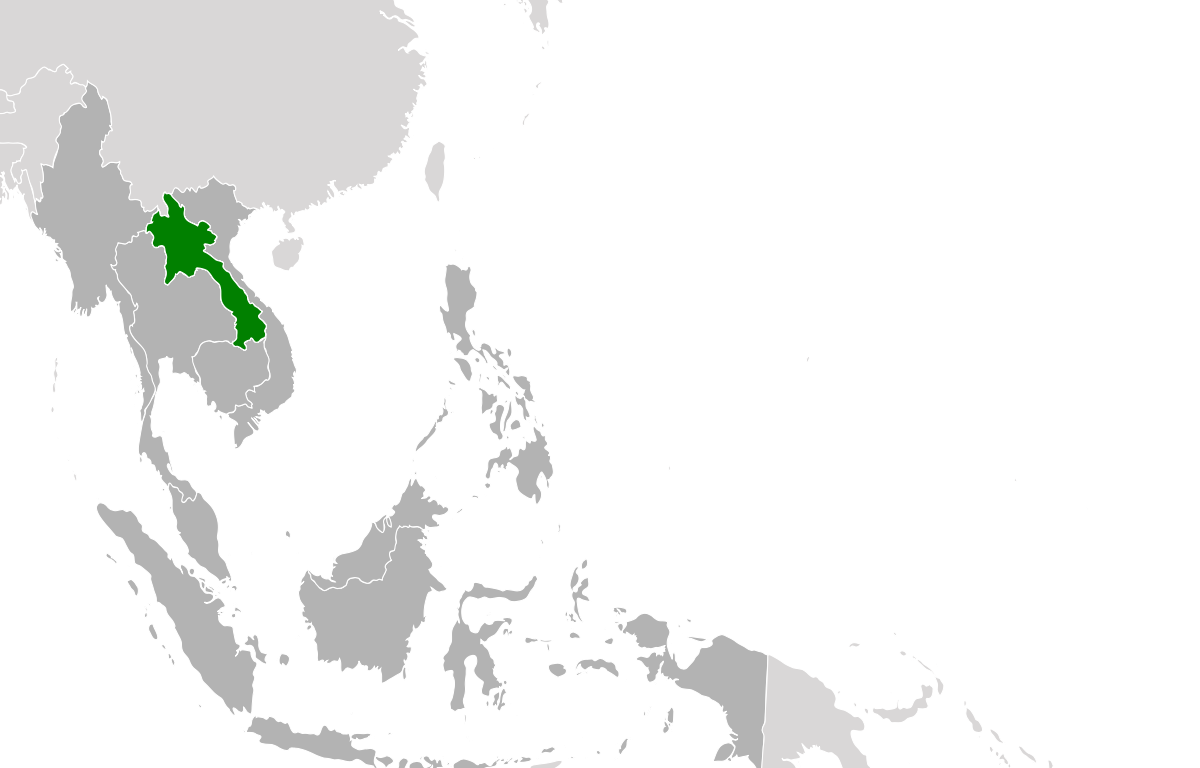
The capital of Laos, the city with the strange name Vientiane, is not even remembered by those who have heard about the country. And there’s no need to.
⁂
A street in the center.
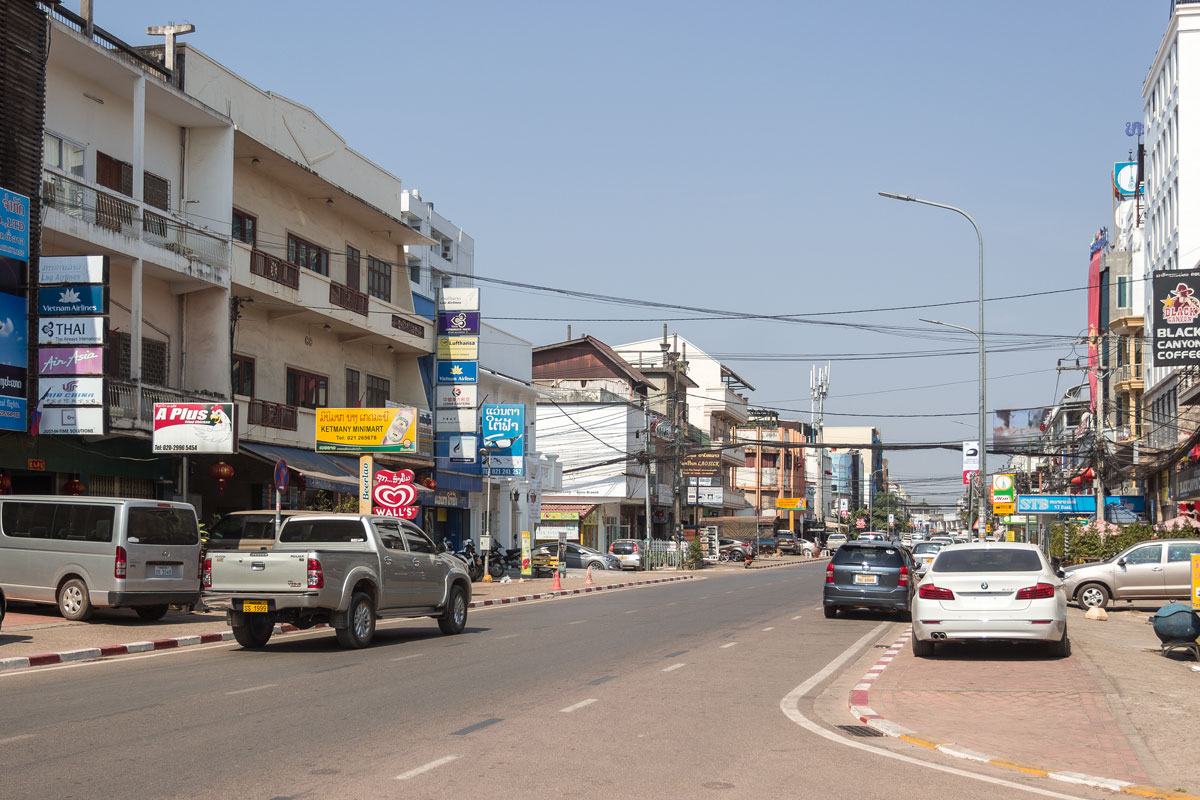
A street not in the center. Middle-level managers go to work in the morning.

It should be noted that in Laos, either there is good asphalt or there is none at all.

Laos thinks it builds communism. After the idea of a planned economy collapsed in all “communist” countries in the late 1980s, the authorities in Laos allowed private businesses. Since then, the economy has started to grow, albeit modestly, and a few years ago, Laos even opened its first stock exchange.
But neither stock market speculation nor state religion prevent Laos from displaying its flag everywhere alongside the hammer and sickle, just as the existence of a single party does not hinder calling the country a “democratic republic.”

Residential buildings in the center of the capital of the “democratic republic.”

Private houses five kilometers away from the center of the capital of the “democratic republic.”
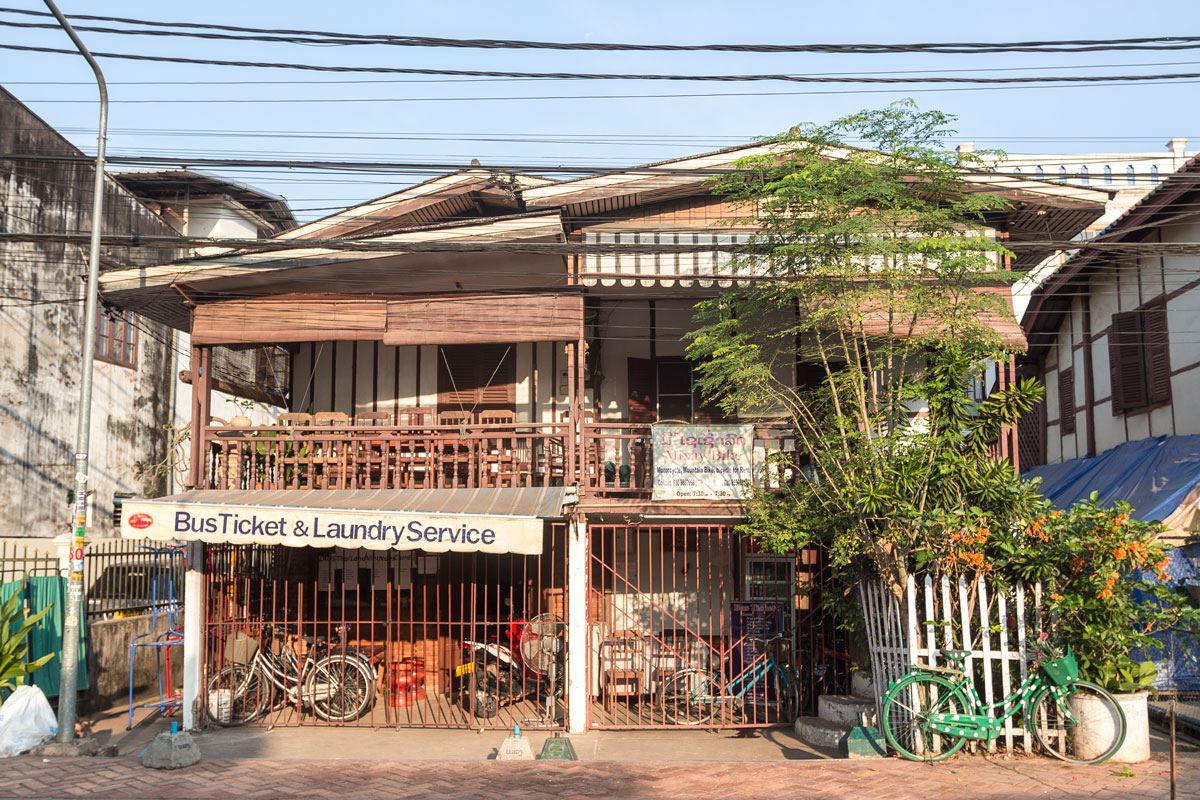
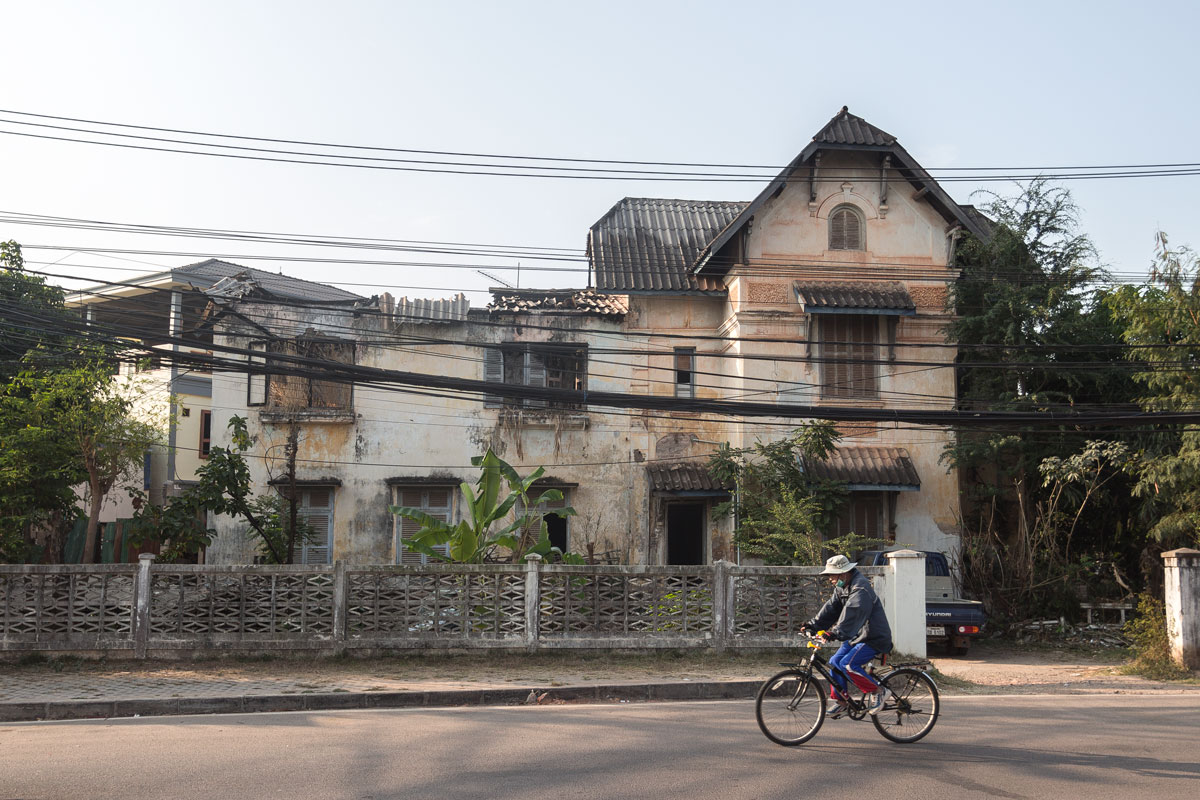
And here is an interesting house. Vietnamese architectural tradition. The roadside location has always been the most valuable in Asia, so houses were oriented perpendicular to the street, rather than parallel to it.
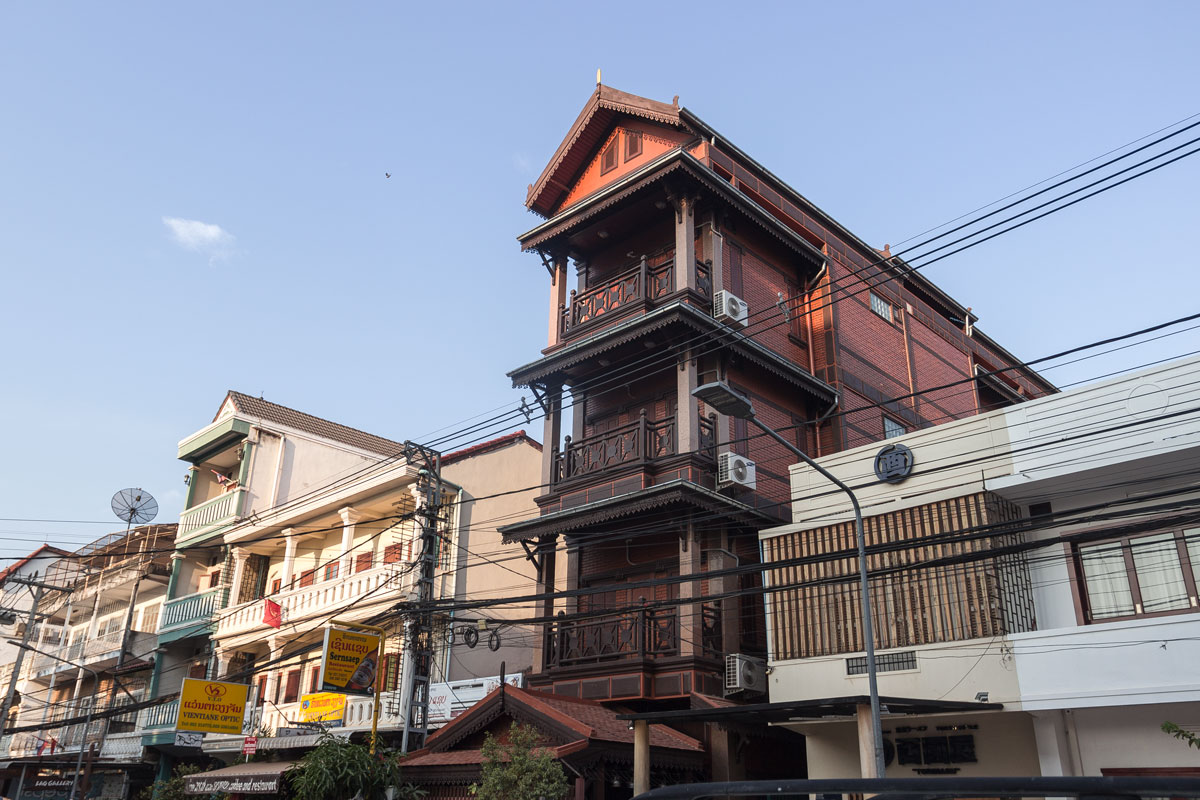
Laos is desperately trying to attract tourists and boost its economy, like Thailand did. So far, without success. There are a few designer cafes in the city.
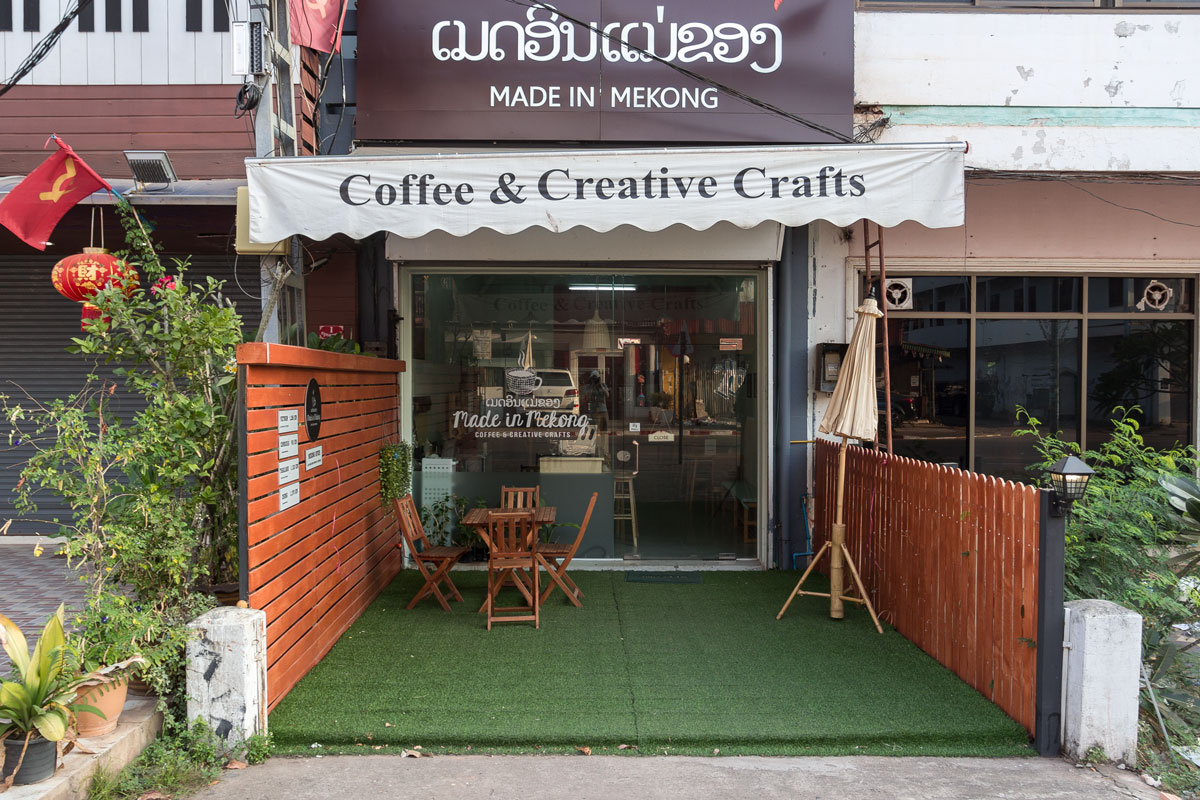
Shabby bars with pretentiousness start appearing.

But the problem is that attractions in Vientiane are limited to a few bars and a couple of shops, which are not enough to attract tourists. There are no significant landmarks in Vientiane, just some silly arch.
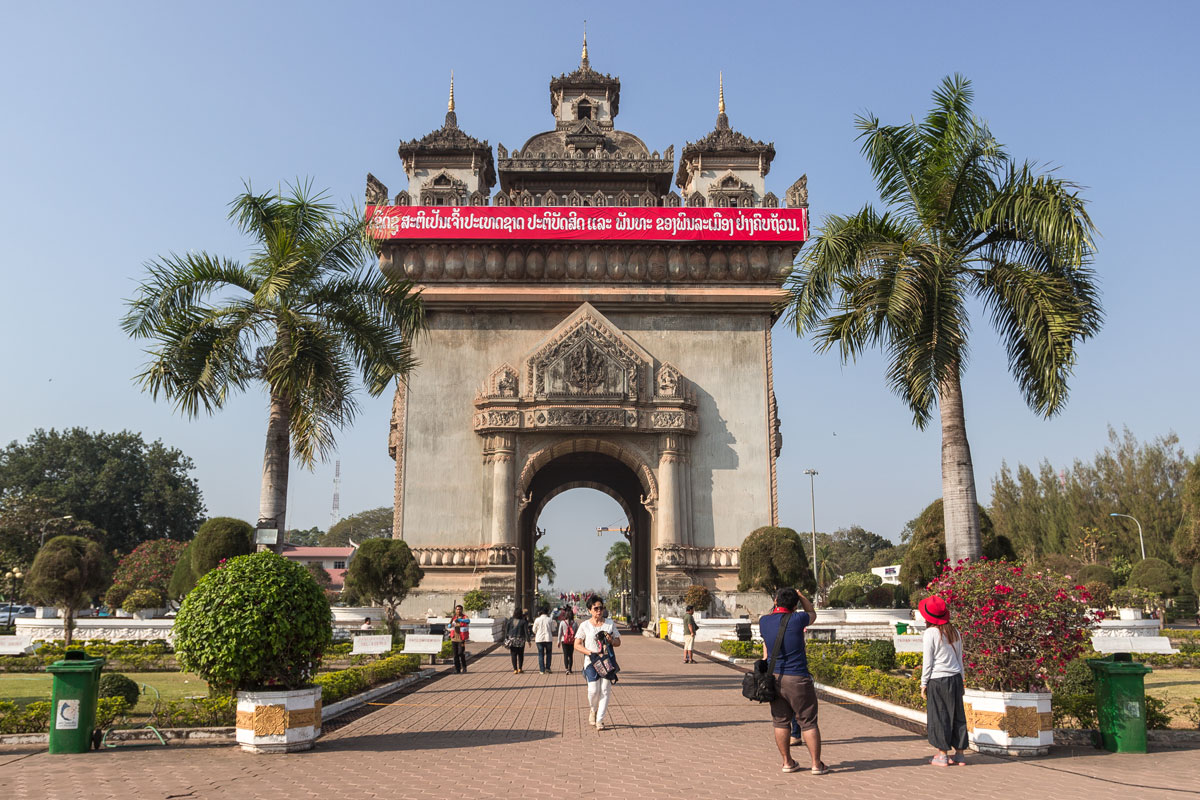
An abandoned palace in a remote location.

And the enormous That Luang stupa, a symbol of the country.

In short, it’s incredibly boring. If you go to Laos, perhaps the only worthwhile destination is the slums along the Mekong River. There’s nothing to do in the cities.
Indeed, not far from Vientiane, there is one good place — the Buddha Park. It is for this reason that rare tourists visit Laos. In the Buddha Park, there lies a giant Buddha.
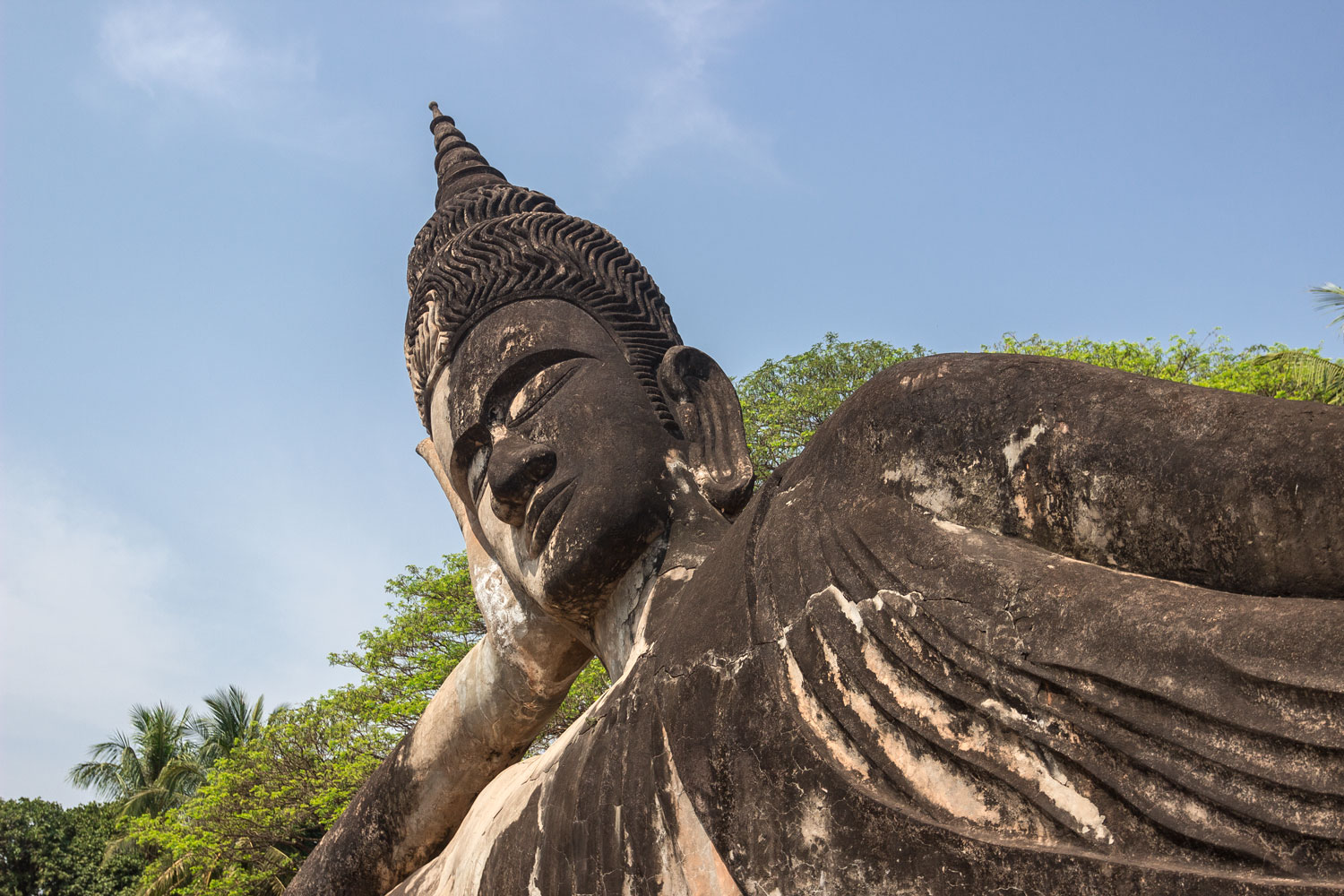
The park itself is a vast wasteland cluttered with sculptures of some gods.

It may seem like some unique prehistoric monument, but it is not. The history of this place is rather mundane: in 1958, a Laotian mystic charlatan and sculptor named Bunleua Sulilat finally figured out how to gain fame and decided to combine Buddhism and Hinduism.
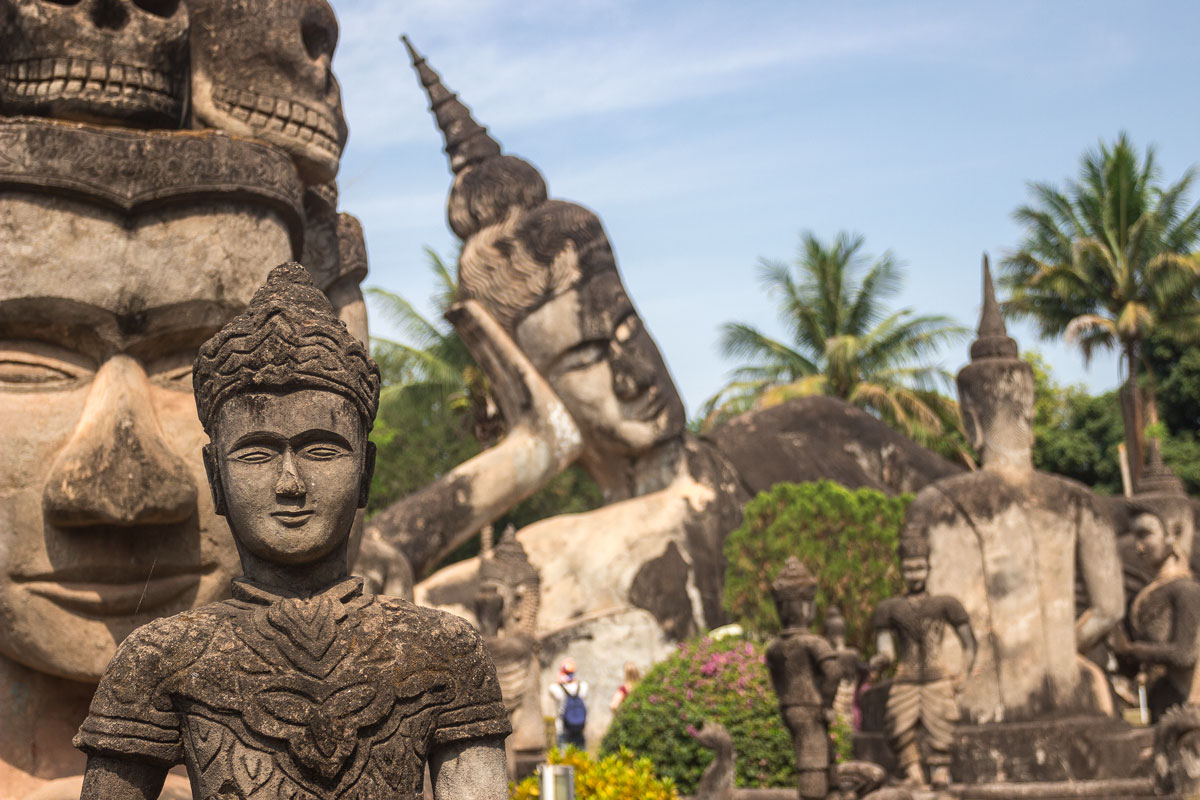
After thoroughly promoting his religious scheme through his sect followers working in Laos’ concrete factories, Sulilat managed to obtain a mountain of free cement. Cement, being the cheapest and softest material for sculpture, was ideal for realizing an Asian version of Zurab Tsereteli’s ambitious plans.
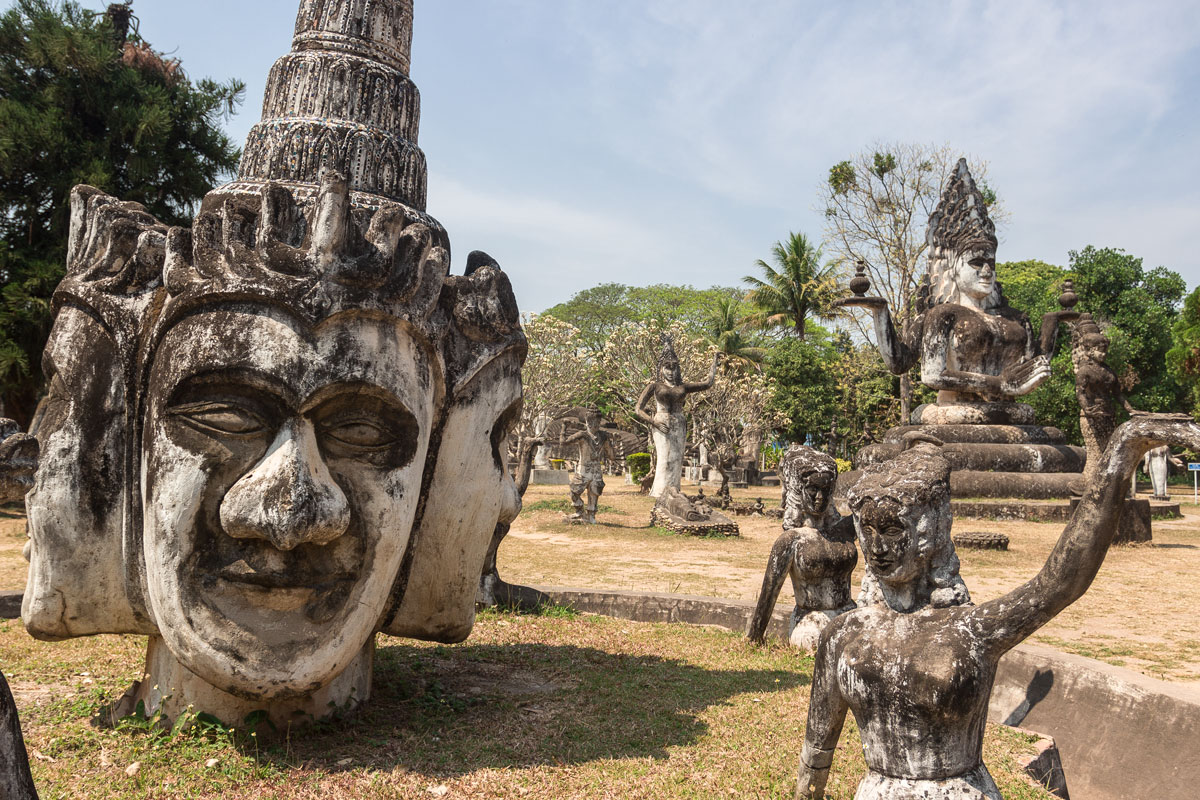
Of course, Sulilat didn’t bother to do the work himself. Instead, he managed to hire several hundred workers who, over the course of several years, created a bunch of mediocre sculptures. All for free.
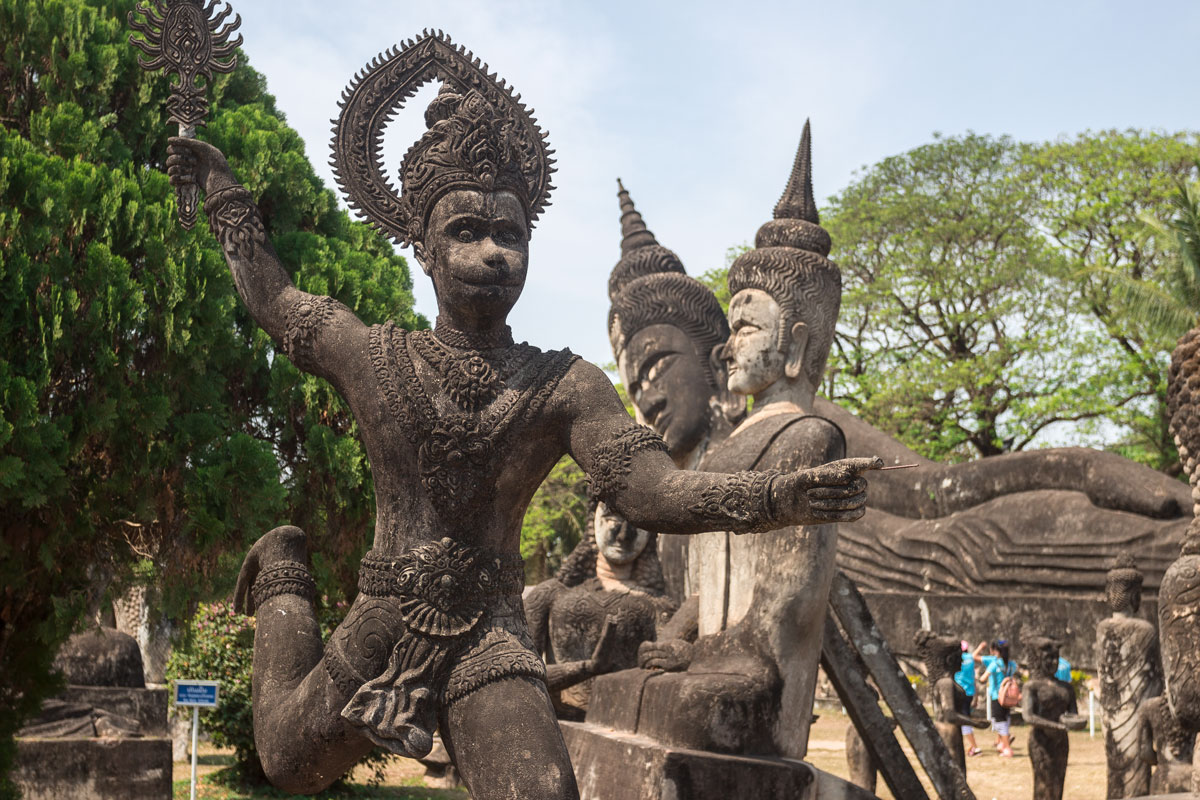
From the outside, it may seem that the sculptures in this park are of excellent quality. Author is not a sculptor to judge them. However, in general, the Buddha Park is considered an excellent example of art brut, which refers to outsider, raw, and crude art.
Well, I don’t know. The photos turned out cool. One big advantage of this park is that you can climb on a couple of sculptures.
After half a century, Sulilat, having returned from political asylum in Thailand, decided to climb one of his statues. And he ended up falling from it to his death. Finita la commedia.
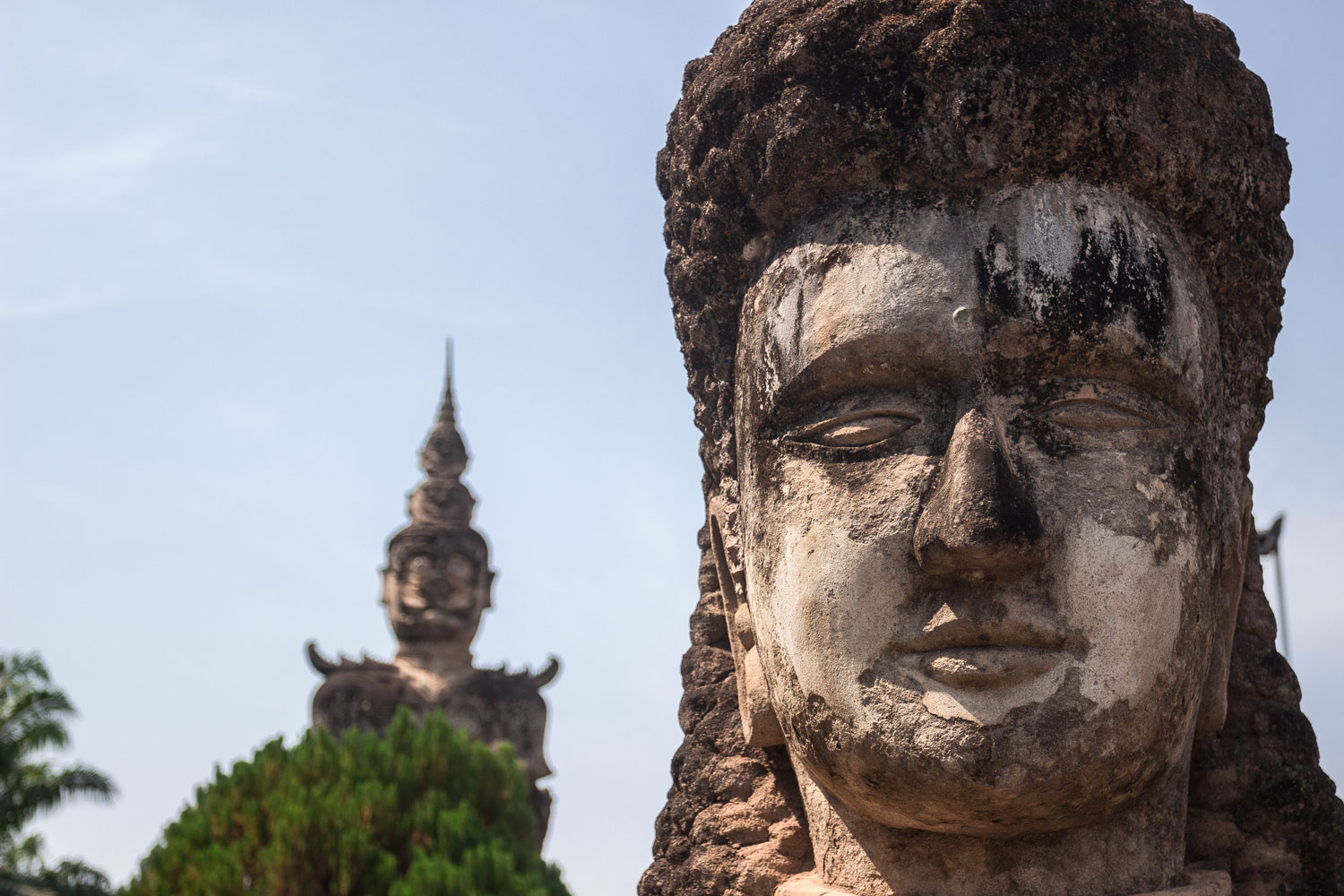
But let’s return to the city. There is still poverty here, after all! All garbage cans in the country are made from pieces of rubber.
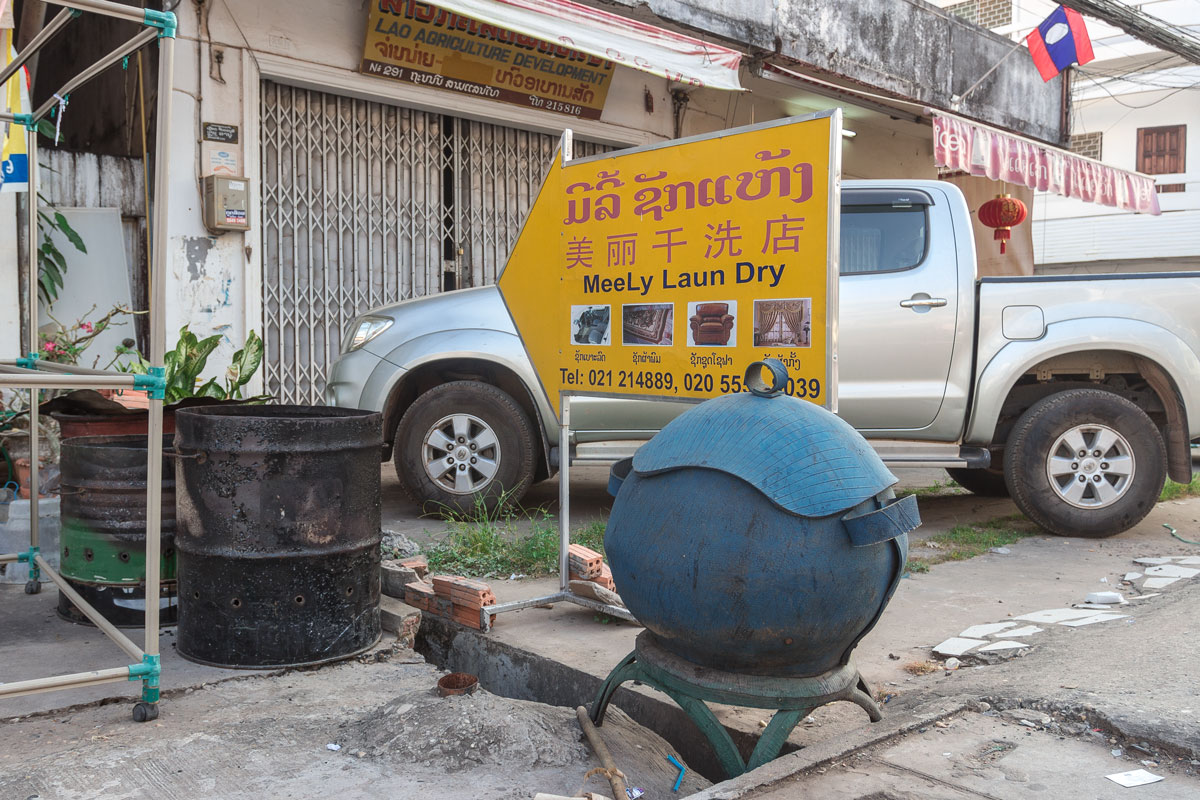
Playground.

Bus stop.

There is a bus stop, but there are practically no buses in Laos. There are only a few routes for the entire city and intercity express buses. The main form of public transportation in Laos is tuk-tuks.
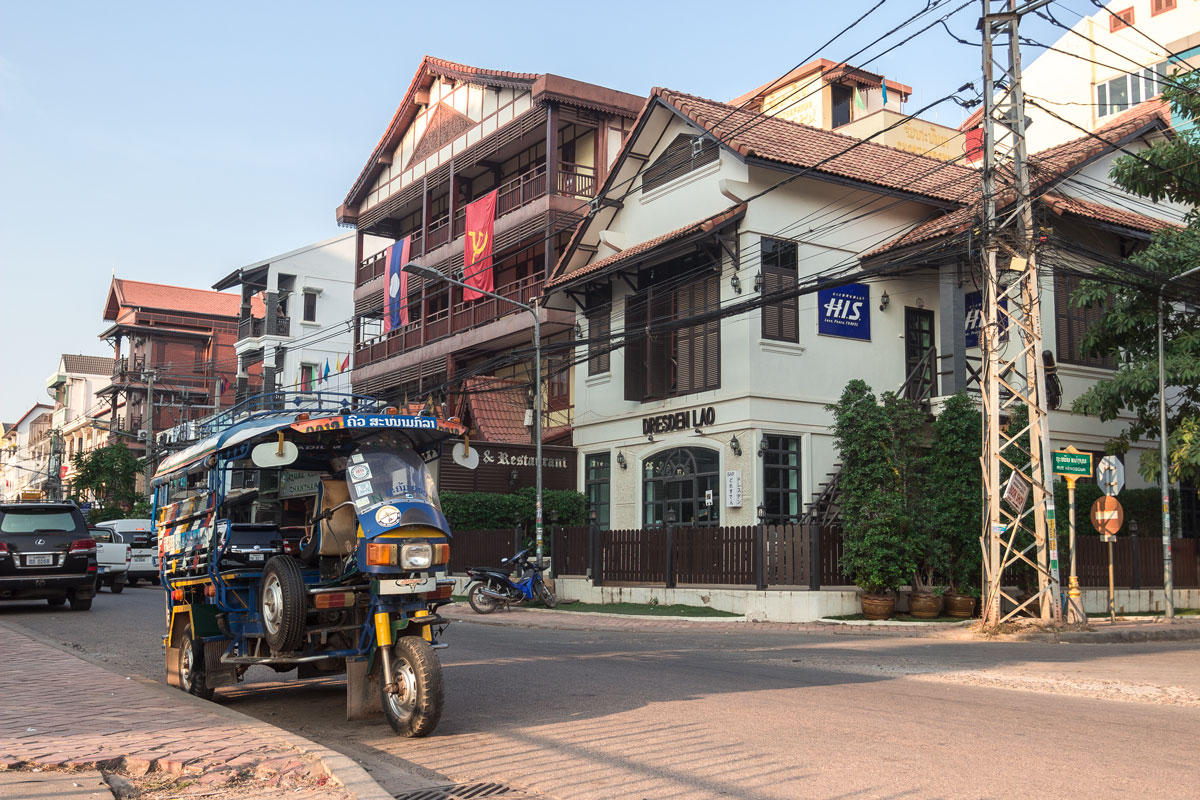
But even tuk-tuks are only available in the center, and if you go a little further away, you have to return in a shaky rickshaw. The sight of a foreigner sitting with an expensive camera on a trailer instantly amuses the Laotians.
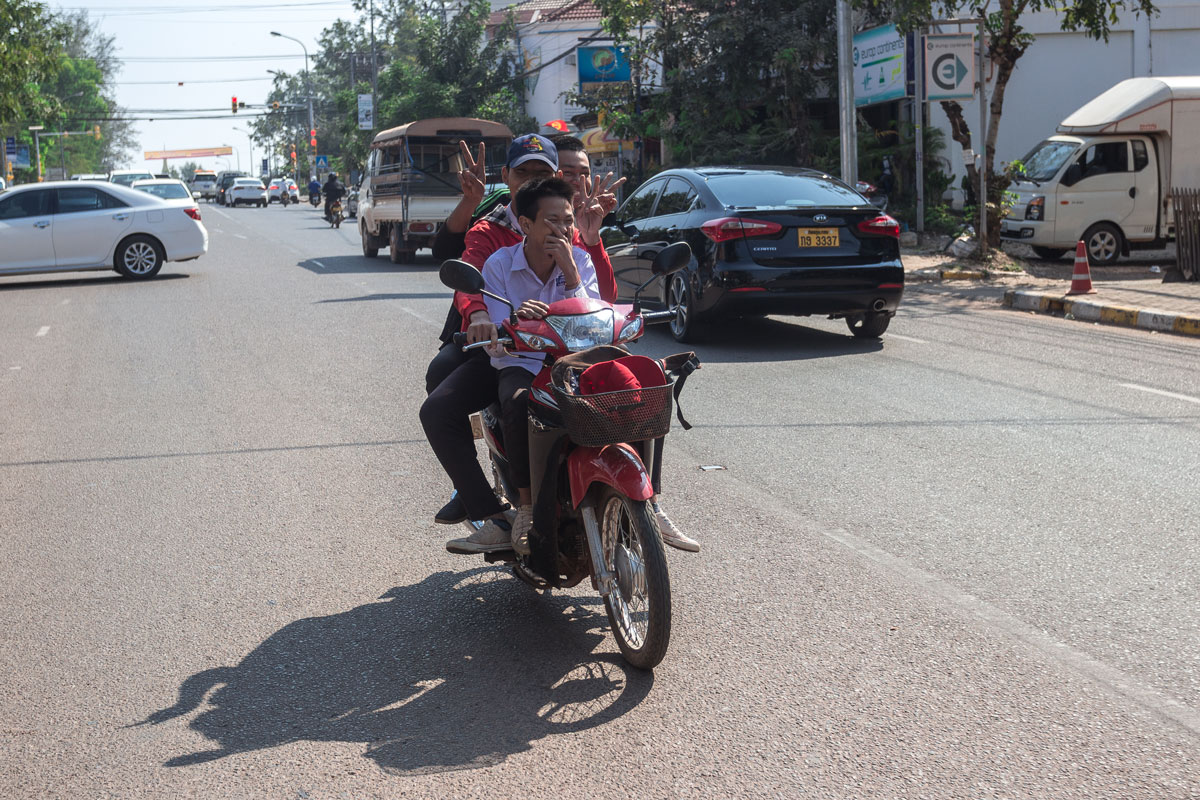
But this laughter is through tears. In the center of Vientiane, there is a national museum. This is how the main museum of Laos looks like.
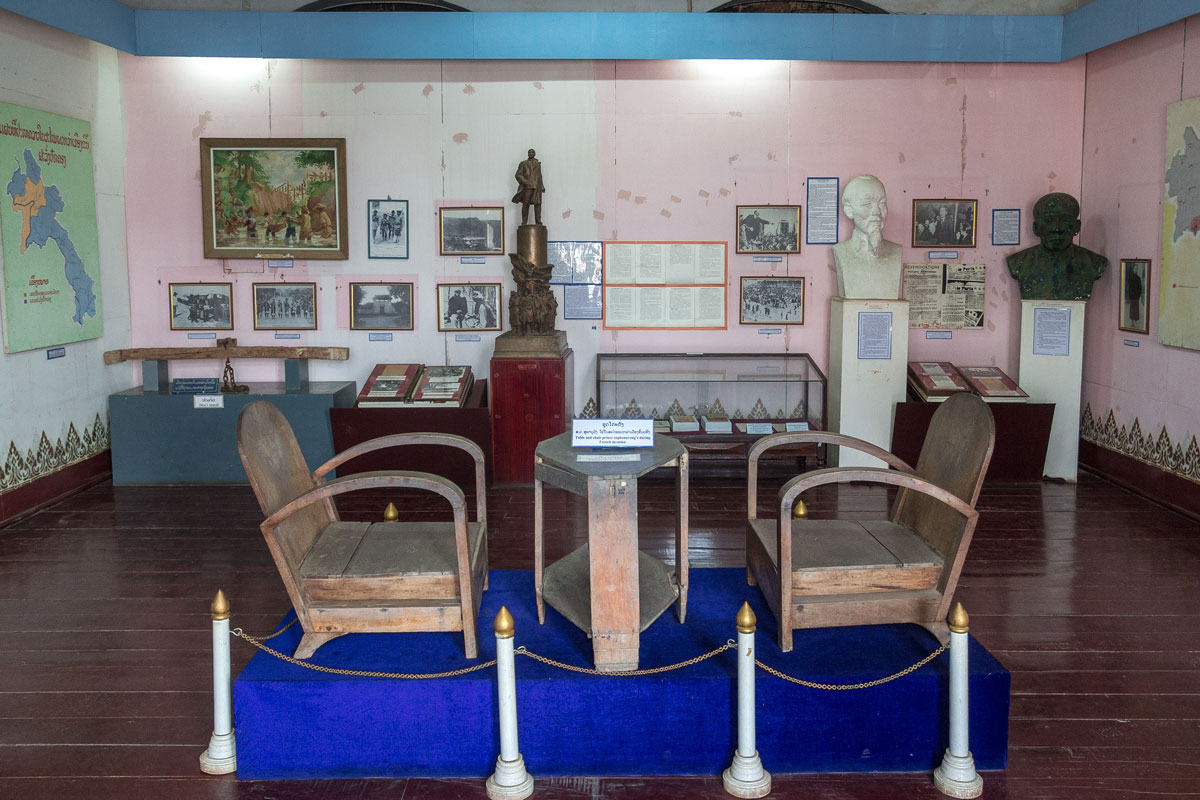
Lenin.
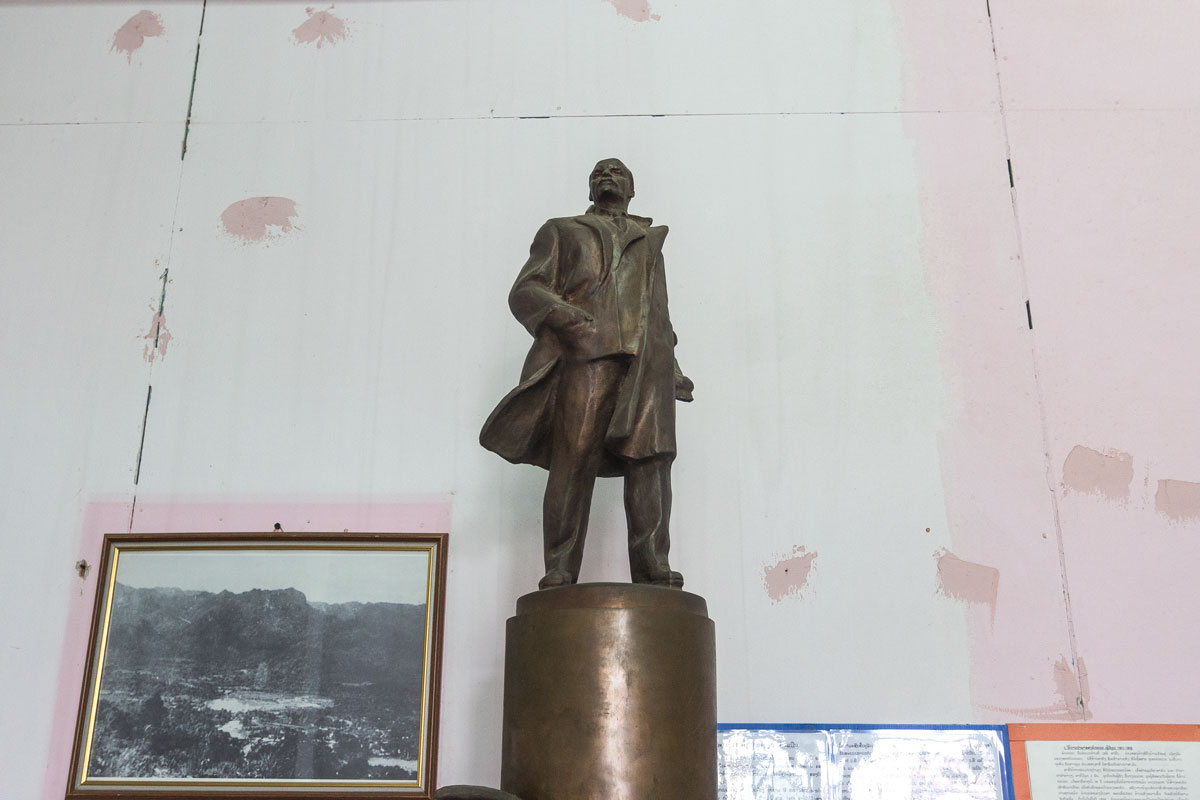
Monument to the struggle against American imperialism.

And, of course, the pinnacle of creation, the root of everything happening in the country. Karl Marx. In Laos, due to language peculiarities, Karl Marx is called “Mister Kakmak”. Essentially, after the Billa supermarket stalls, this is the second thing that the reader should know about Laos.
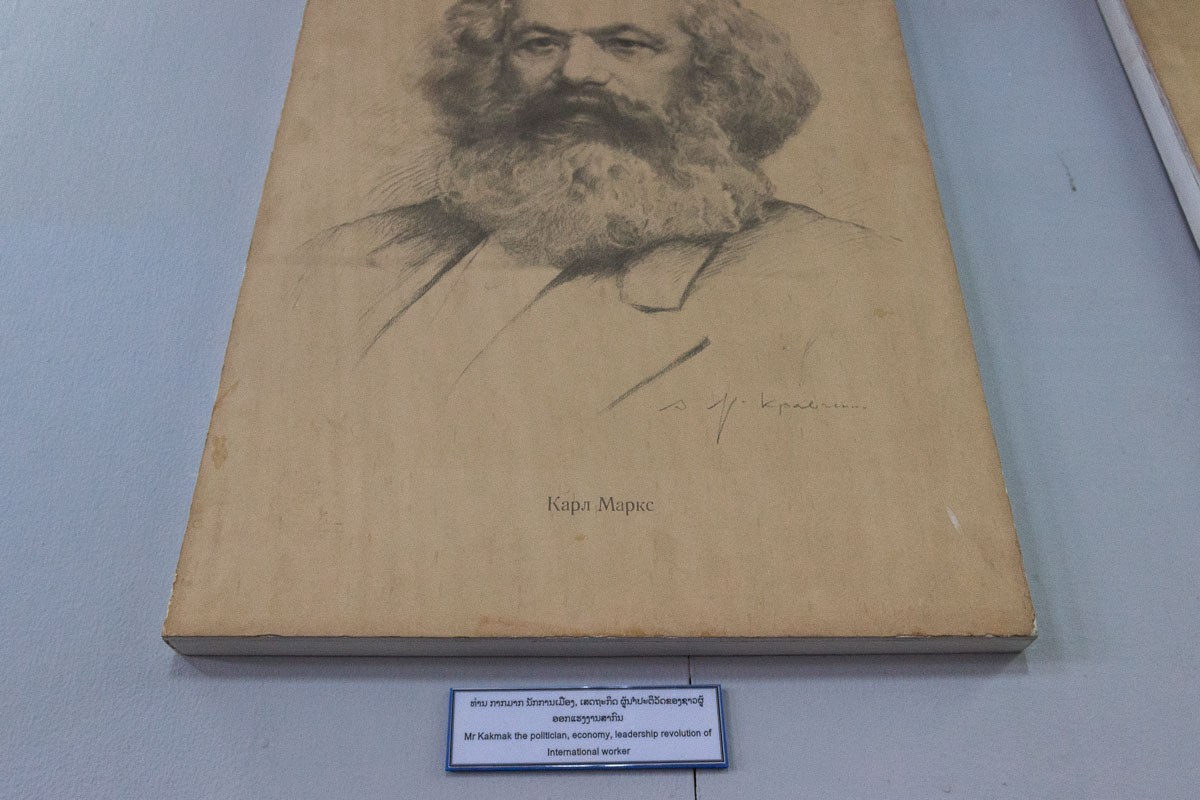
In short, the author walked around Vientiane and pondered. Why is Thailand so good and Laos so bad? The climate is the same. The people are also somewhat similar. They share common religion and traditions.
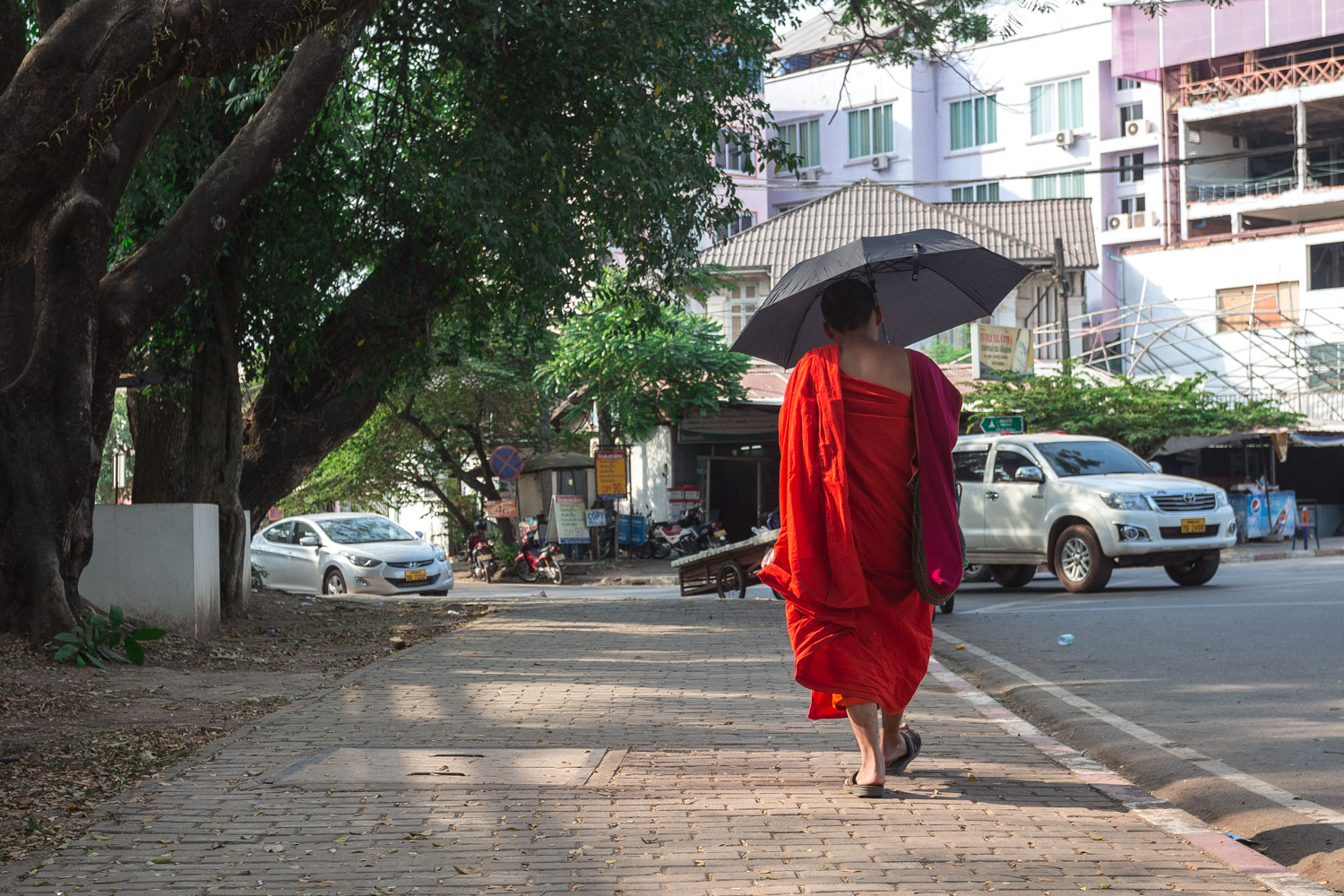
Perhaps that’s the case. What’s it called? Communism?
Nah, no way.


